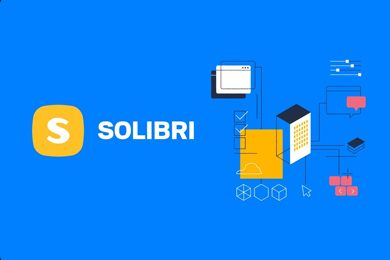This plan includes
- Limited free courses access
- Play & Pause Course Videos
- Video Recorded Lectures
- Learn on Mobile/PC/Tablet
- Quizzes and Real Projects
- Lifetime Course Certificate
- Email & Chat Support
What you'll learn?
- A lot of fundamental concepts in computer graphics
- 3D modeling and look development skills using 3ds Max
- Using Corona Renderer for rendering interior scenes
- Become a job-ready person in 3D visualization industry
Course Overview
This course effectively teaches you how to create beautiful 3D architectural visualization using 3ds Max 2022 and Corona Renderer 7 with just a fraction of the time usually needed. You'll master the knowledge to create stunning 3D renderings and become a fully job-ready person in the industry, in sha Allah.
Architectural visualization is the skill needed in every architecture project or real estate development. Why? Because architects need them to present their designs and real estate developers need them to make the sale. Architectural 3D modeling is also essential in the game industry for crafting game levels. And also important in the VFX industry for creating virtual sets. The demand is very high yet not many people are willing to master it, thinking it's complicated stuff to master. Well not anymore!
This course effectively teaches you how to create beautiful 3D architectural visualization using 3ds Max 2022 and Corona Renderer 7 with just a fraction of the time usually needed. You'll master the knowledge to create stunning 3D renderings and become a fully job-ready person in the industry, or be able to create your own design firm, in sha Allah.
This course is designed for a complete beginner so no prior experience is needed. On the other hand, seasoned 3ds Max users can benefit from this course as we'll be covering advanced topics also in this course. Besides lifetime access to professional-quality lesson videos, you'll also get all of the project's files including 3ds Max files, texture images, and Photoshop composition files.
So, join now! And take your first step in becoming a professional 3D artist or 3D entrepreneur!
Pre-requisites
- Understand the basics of operating PC computers
- Already have 3ds Max installed (at least version 2022)
- Already have Corona Renderer installed (at least bersion 7)
- Photoshop basic knowledge will be helpful although not necessary
Target Audience
- Beginners who never use 3ds Max or any 3D software before
- 3ds Max users who want to explore the Corona rendering engine
- Architects or interior designers who want to learn 3D visualization
Curriculum 110 Lectures 12:56:45
Section 1 : Introduction
- Lecture 2 :
- Conventions and disclaimer
- Lecture 3 :
- Download the exercise files
Section 2 : User interface
- Lecture 1 :
- Basics of 3ds Max UI
- Lecture 2 :
- Viewport navigation
- Lecture 3 :
- Alternative navigation methods
- Lecture 4 :
- Display settings and startup file
Section 3 : Object operations
- Lecture 1 :
- Create and modify objects
- Lecture 2 :
- Object selection
- Lecture 3 :
- Transformation
- Lecture 4 :
- Pivot point
- Lecture 5 :
- Transformation settings
- Lecture 6 :
- Modifier
- Lecture 7 :
- Object duplication
Section 4 : Scene management
- Lecture 1 :
- Managing objects
- Lecture 2 :
- Scene explorer
- Lecture 3 :
- Layer management
- Lecture 4 :
- Selection set and group
Section 5 : Editable Poly modeling
- Lecture 1 :
- Primitive vs Editable
- Lecture 2 :
- Editable poly basic operations
- Lecture 3 :
- Sub-object basic selection
- Lecture 4 :
- Ring and Loop selection
- Lecture 5 :
- Selection conversion and preferences
- Lecture 6 :
- Normal direction and backface culling
- Lecture 7 :
- Edge modeling techniques
- Lecture 8 :
- Cut and slice techniques
- Lecture 9 :
- Surface smooth shading
- Lecture 10 :
- Capping holes and edge extrusion
- Lecture 11 :
- Bridge
- Lecture 12 :
- Polygon modeling techniques
Section 6 : Precision modeling
- Lecture 1 :
- Measurement unit
- Lecture 2 :
- Scale modes
- Lecture 3 :
- Resetting transformation
- Lecture 4 :
- Resizing objects precisely
- Lecture 5 :
- Snapping
- Lecture 6 :
- Smart Extrude
- Lecture 7 :
- Aligning objects
Section 7 : Basic 3D modeling projects
- Lecture 1 :
- Project: The picture frame
- Lecture 2 :
- Project: The coffee table
- Lecture 3 :
- Project: The shelves
- Lecture 4 :
- Project: The TV
- Lecture 5 :
- Project: The room and ceiling
- Lecture 6 :
- Project: The door
- Lecture 7 :
- Project: The Window
Section 8 : Spline-based modeling
- Lecture 1 :
- Introduction to Spline
- Lecture 2 :
- Line creation and spline vertex types
- Lecture 3 :
- Spline creation exercise
- Lecture 4 :
- Adding and deleting vertices or segments
- Lecture 5 :
- Spline modification
- Lecture 6 :
- Spline Boolean
- Lecture 7 :
- Cross-insert, Weld and Trim
- Lecture 8 :
- Extrude modifier
- Lecture 9 :
- Lathe modifier
- Lecture 10 :
- Bevel profile modifier
Section 9 : Intermediate 3D modeling projects
- Lecture 1 :
- Project: The curtain
- Lecture 2 :
- Using reference image
- Lecture 3 :
- Project: The Bow floor lamp - Part 1
- Lecture 4 :
- Project: The Bow floor lamp - Part 2
- Lecture 5 :
- Project: Tileable 3D pattern
- Lecture 6 :
- Project: The backdrop
- Lecture 7 :
- Project: Echasse vase
- Lecture 8 :
- Project: The crown molding, plinth, and downlights
- Lecture 9 :
- Project: The loudspeaker
- Lecture 10 :
- Project: Placing the furniture
Section 10 : Subdivision modeling
- Lecture 1 :
- Subdivision modeling introduction
- Lecture 2 :
- Using non-quad polygons
- Lecture 3 :
- Avoiding concave polygons
Section 11 : Advanced 3D modeling projects
- Lecture 1 :
- Project: Teacup
- Lecture 2 :
- Project: The sofa - Part 1
- Lecture 3 :
- Project: The sofa - Part 2
- Lecture 4 :
- Project: The sofa - Part 3
- Lecture 5 :
- Project: The sofa - Part 4
Section 12 : Material basics
- Lecture 1 :
- Renderer basics
- Lecture 2 :
- Material basic concepts
- Lecture 3 :
- Material editor
- Lecture 4 :
- Material browser categories
- Lecture 5 :
- Assigning and picking materials
- Lecture 6 :
- Sample slots
- Lecture 7 :
- Material library
- Lecture 8 :
- Multi sub-object material
- Lecture 9 :
- Color models
- Lecture 10 :
- Bit depth and high-range images
Section 13 : Corona Renderer
- Lecture 1 :
- Corona Renderer basics
- Lecture 2 :
- Corona IR, Sun, and Sky
- Lecture 3 :
- Viewport IR and high-range image lighting
- Lecture 4 :
- Corona light and mesh light
- Lecture 5 :
- Corona physical material - Part 1
- Lecture 6 :
- Corona physical material - Part 2
- Lecture 7 :
- Rendering limits and Denoising
- Lecture 8 :
- Material override, Render elements, and Masking
- Lecture 9 :
- Nonphysical light properties
Section 14 : Basic material and lighting projects
- Lecture 1 :
- Reviewing the changes
- Lecture 2 :
- Project: Adding the camera
- Lecture 3 :
- Project: Basic lights
- Lecture 4 :
- Project: Decorative lights and backlight
- Lecture 5 :
- Project: Basic materials
Section 15 : Texturing and UV Mapping
- Lecture 1 :
- Procedural vs Image textures
- Lecture 2 :
- Applying textures
- Lecture 3 :
- Using PBR textures
- Lecture 4 :
- Basic UV mapping
- Lecture 5 :
- Unwrap UV mapping
- Lecture 6 :
- Real-world map size
Section 16 : Texturing and rendering projects
- Lecture 1 :
- Project: Using Corona library materials
- Lecture 2 :
- Project: The shelves and backdrop textures
- Lecture 3 :
- Project: The floor and carpet textures
- Lecture 4 :
- Project: The TV and picture frame textures
- Lecture 5 :
- Project: Importing free assets
- Lecture 6 :
- Project: The armchair UV unwrapping
- Lecture 7 :
- Project: Rendering and post processing
- Lecture 8 :
- Project: Fixing the floor reflection
Our learners work at
Frequently Asked Questions
How do i access the course after purchase?
It's simple. When you sign up, you'll immediately have unlimited viewing of thousands of expert courses, paths to guide your learning, tools to measure your skills and hands-on resources like exercise files. There’s no limit on what you can learn and you can cancel at any time.Are these video based online self-learning courses?
Yes. All of the courses comes with online video based lectures created by certified instructors. Instructors have crafted these courses with a blend of high quality interactive videos, lectures, quizzes & real world projects to give you an indepth knowledge about the topic.Can i play & pause the course as per my convenience?
Yes absolutely & thats one of the advantage of self-paced courses. You can anytime pause or resume the course & come back & forth from one lecture to another lecture, play the videos mulitple times & so on.How do i contact the instructor for any doubts or questions?
Most of these courses have general questions & answers already covered within the course lectures. However, if you need any further help from the instructor, you can use the inbuilt Chat with Instructor option to send a message to an instructor & they will reply you within 24 hours. You can ask as many questions as you want.Do i need a pc to access the course or can i do it on mobile & tablet as well?
Brilliant question? Isn't it? You can access the courses on any device like PC, Mobile, Tablet & even on a smart tv. For mobile & a tablet you can download the Learnfly android or an iOS app. If mobile app is not available in your country, you can access the course directly by visting our website, its fully mobile friendly.Do i get any certificate for the courses?
Yes. Once you complete any course on our platform along with provided assessments by the instructor, you will be eligble to get certificate of course completion.
For how long can i access my course on the platform?
You require an active subscription to access courses on our platform. If your subscription is active, you can access any course on our platform with no restrictions.Is there any free trial?
Currently, we do not offer any free trial.Can i cancel anytime?
Yes, you can cancel your subscription at any time. Your subscription will auto-renew until you cancel, but why would you want to?
Instructor

8580 Course Views
7 Courses



 Tech & IT
Tech & IT
 Business
Business
 Coding & Developer
Coding & Developer
 Finance & Accounting
Finance & Accounting
 Academics
Academics
 Office Applications
Office Applications
 Art & Design
Art & Design
 Marketing
Marketing
 Health & Wellness
Health & Wellness
 Sounds & Music
Sounds & Music
 Lifestyle
Lifestyle
 Photography
Photography






















